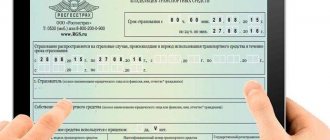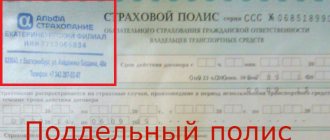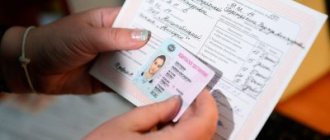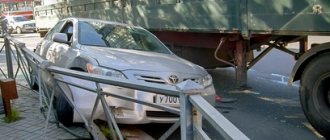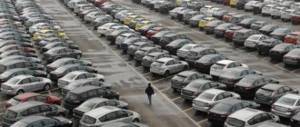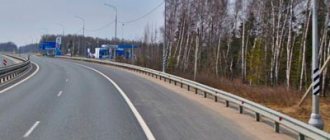Road traffic accidents (accidents) are becoming commonplace, because every year their number increases and their scale grows. This is largely due to the increase in traffic on the roads, but an important factor is the level of conscious attitude of drivers towards compliance with traffic rules (traffic rules). To understand exactly what an accident is, and what legal, financial, and administrative consequences it may entail, let’s consider how the code of traffic rules of the Russian Federation interprets the concept in question.
Definition of the concept of “road accident”
According to paragraph 1.2 of the traffic rules, an accident is an incident that occurred with the participation of a vehicle (one or more).
The definition of an accident in the traffic rules contains a designation of the range of possible consequences of the incident:
- death of people or infliction of severe physical injury;
- damage to vehicles, buildings, property;
- causing any other damage.
In the traffic rules you can also find a list of the defining characteristics of the incident:
- An accident occurs only if a vehicle is involved;
- the mechanism of an accident requires that the car must be in motion at the time of the accident;
- the consequences indicated above (all or some of them) are mandatory conditions for the fact of determining an accident.
An important point when analyzing the nature and nature of an accident is to determine its boundaries and scale. Often, road users use the term “accident” instead of the term road accident. However, these definitions do not always coincide.
To understand the difference between an accident and a traffic accident, it is necessary to clarify the nature and essence of the first event.
What does it mean to have a road accident?
An accident is an incident that resulted in the destruction of structures, technical means and equipment. May be accompanied by an uncontrolled explosion or release of hazardous substances. That is, an accident can be defined as an incident as a result of which the functioning of certain units, machines, devices (including motor vehicles) is disrupted.
According to the classification of road accidents, it can be determined that the presence of a vehicle is mandatory to define the very concept of this incident. Car damage can be one of the consequences of an accident, but it is not necessary. Therefore, not everything that is considered an accident will be an accident. Just like a significant number of accidents are not accidents in nature.
At the same time, hitting an obstacle, for example, can be both an accident and an accident. The main factor here is the involvement of the vehicle in the incident, as well as the degree of damage to the vehicle. Quite often, the concepts of “accident” and road traffic accident are used as synonyms, but in the legal sense these terms are not identical.
A multi-vehicle collision is almost always an accident because the vehicles experience significant damage or destruction as a result of the incident.
As a result of an accident, people may die, since its scale is often quite significant. However, this is not a mandatory feature.
Road accident. Concept, types, causes, conditions, consequences
6) collision with a cyclist - an incident in which a vehicle ran into a cyclist or he himself collided with a moving vehicle;
7) collision with horse-drawn vehicles - an incident in which a vehicle ran into draft animals, as well as carts transported by these animals, or draft animals or carts transported by these animals hit a moving vehicle. This type also includes hitting an animal;
 passenger fall - an incident in which a passenger falls from a moving vehicle or in the cabin (body) of a moving vehicle as a result of a sudden change in speed or trajectory, etc., if it cannot be classified as another type of traffic accident.
passenger fall - an incident in which a passenger falls from a moving vehicle or in the cabin (body) of a moving vehicle as a result of a sudden change in speed or trajectory, etc., if it cannot be classified as another type of traffic accident.
A passenger falling from a stationary vehicle while boarding (disembarking) at a stop is not an accident;
9) other type of traffic accident - incidents not related to the types indicated above. This includes the fall of a transported load or an object thrown by a wheel onto a person, animal or other vehicle, a collision with persons who are not road users, a collision with a suddenly appeared obstacle (a fallen load, a separated wheel, etc.), etc.
See also: Fine for not having a tachograph from November 1, 2019
In accordance with the listed types of accidents, three conditions must be met: the vehicle must be moving; the event itself must be related to the vehicle; the consequences of the event must meet the specified conditions (people were killed or injured, vehicles, structures, cargo were damaged, or other material damage was caused).
The conditions for the occurrence of an accident are understood as a set of characteristics of the road, vehicles, driver and environment at the time of the accident. These characteristics may remain the same before and after the occurrence of a traffic accident and are not necessarily causally related to it.
The circumstances of the occurrence of an accident are the actions (or inaction) of road users, other persons involved in the road accident, as well as other events that took place before and during the occurrence of the road accident. Unlike conditions, circumstances are a description of the mechanism by which a traffic accident occurs over time.
Classification of road accident participants
The traffic rules classify all participants in an accident according to the principle of determining their role and degree of participation in the incident.
There are three categories of road accident participants:
- drivers;
- passengers;
- pedestrians.
In this case, the driver is not only the person directly behind the wheel of the car involved in the accident. The driver can be a driving instructor, as well as a cattle driver whose herd moves along the road.
The category of passengers includes persons directly inside the vehicle, as well as those who could be exiting or entering it at the time of the accident.
Pedestrians are a fairly broad category. They can become participants in road accidents, and in some cases even the culprits. This category includes persons who move directly along the road or side of the road. A pedestrian can move accompanied by a motorcycle or bicycle, which is driven next to him.
In addition, a pedestrian is a person who moves with the help of a scooter, roller skates, skates and other similar devices. A person driving a child stroller or wheelchair is also a pedestrian. All these persons can become participants in an accident.
Road accident statistics for 2021 in Russia indicate that the number of major incidents is constantly growing. The culprits are both drivers and passengers or pedestrians. This indicates a low level of road transport literacy of the population and a lack of mutual culture of road travel.
Main causes of road accidents in Russia
The causes of accidents on the road can be very diverse. In particular, the following increased risk factors are identified:
- ignorance or ignoring traffic rules;
- drunkenness or poor physical health of the driver;
- unsatisfactory technical condition of the vehicle;
- influence of bad weather conditions;
- reduced visibility on the road;
- potentially hazardous road surface.
The nature of road accidents and the causes of their occurrence are usually closely related.
People driving a car show inattention, and sometimes criminal negligence, and are distracted by extraneous factors (talking on the phone, listening to music, the presence of animals and children in the car). As statistics show, a significant number of accidents occur due to the driver’s fault.
It is important to take into account that the negligence of a pedestrian is not a sufficient basis for recognizing the extent of his guilt in an accident. In some cases, drivers are able to prove that the victim deliberately threw himself under the wheels of a car in order to receive financial compensation. But establishing these criminal circumstances is only possible with a thorough investigation of the incident. Evidence of a pedestrian’s guilt in an accident can be provided by written testimony of witnesses, but the court does not always consider them sufficient, since there may be a fact of bias.
If pedestrians exercise a little more caution and drivers pay attention to following traffic rules, the risk of serious accidents on our roads will be significantly reduced.
Many participants, having been involved in an accident, try to evade responsibility by offering various excuses and unreliable reasons. For example, they try to blame the victim for intentional negligence or explain the situation due to the influence of extraneous factors (bad weather, poor quality of the road surface).
It should be remembered that such behavior in an accident not only will not help avoid consequences, but can also aggravate the liability of the culprit. Especially if a person was killed or seriously injured as a result of an accident, as well as if significant material damage was caused.
Read also: Accidents with pedestrians in 2021 Sample of filling out an accident log for an organization
Types of accidents
Types of road accidents vary significantly in nature and level of complexity. The presence of consequences of a criminal or administrative nature is also important.
Taking into account these factors, an accident on the road may be:
- collision;
- capsizing;
- collision with damage to a stationary vehicle (collisions with pedestrians, cyclists, obstacles, and horse-drawn vehicles are distinguished);
- passenger fall.
Another type of accident is also possible, that is, incidents associated with certain circumstances, technical nuances, and peculiarities of the organization of road traffic.
A common and quite serious category of the event in question is a triple accident, when three cars are involved.
In many ways, the nature of the incident depends on a certain model of response to a particular stress factor, the presence of specific circumstances, potentially dangerous road markers, and the operational condition of vehicles.
As traffic practice shows, accidents occur quite often when turning left. This is especially true for triple incidents. Such incidents usually have extremely serious consequences, especially if the vehicles were traveling at high speed. It is not uncommon for drivers and passengers to die. The extent of responsibility in this case is established during the investigation; the perpetrators face serious criminal liability.
The main types of accidents that require ASR
The main types of road accidents that require ASR are collisions, which are divided into:
frontal - collision of a vehicle in oncoming traffic;
side - a collision of a vehicle with the side of another vehicle;
tangent - a collision of a vehicle with the sides during oncoming traffic or movement in one direction; rollover - an incident in which a moving vehicle overturns;
collision with a stationary vehicle - an incident in which a moving vehicle collided with a stationary vehicle, as well as a trailer or semi-trailer;
hitting an obstacle - an incident in which the vehicle ran over or hit a stationary object (bridge support, pole, tree, fence, etc.).
Special types of accidents that require ASR
Special types of road accidents are road accidents complicated by dangerous factors that require special training of rescuers or the involvement of additional forces and resources. Road accidents with a vehicle falling into water are road accidents in which vehicles for some reason fall into rivers, lakes, the sea, fall through ice, etc. Road accidents involving vehicles falling from steep slopes are road accidents in which vehicles, for some reason, fall off steep slopes and, when falling, usually turn over several times, hitting rock ledges, and fly 100–150 m or more. Sometimes vehicles explode. The vehicles themselves turn into a pile of twisted metal. Road accident on a railway section - road accidents in which: a vehicle collides with a rolling or stationary train at a railway crossing or on a section of the railway not intended for crossing; A vehicle collides with another vehicle at a railway crossing; a rolling stock collides with a vehicle at a railway crossing or on a section of the railway not intended for crossing. An accident involving a tram (trolleybus) is an accident in which a tram (trolleybus) collided (ran over) into another vehicle, or as a result of power wires breaking and falling on the vehicle, or the tram derailing and overturning, the vehicle or people were injured. Road accident with fire - road accident accompanied by fire of emergency vehicles and the cargo they transport. Getting a vehicle under a rubble is an accident in which a vehicle with people as a result of natural or man-made phenomena fell under an avalanche, mudflow, landslide, rockfall, etc. Road accidents in a tunnel (overpass) are road accidents complicated by the specifics of a limited space, which makes it difficult to access the accident site, carry out emergency response and evacuate victims. Road accident with a vehicle transporting dangerous cargo - an accident with a vehicle transporting cargo falling under the category of dangerous, as a result of which it leaked (ejection, fire, etc.) or there is a danger of such a situation, including: - Road accident with a vehicle transporting flammable liquids (FL) or flammable liquids, which resulted in a spill or leak; — an accident with a vehicle transporting hazardous chemical substances (HAS), which resulted in a spill or leak; — an accident with a vehicle transporting radiation hazardous substances (RH), as a result of which a spill or leak occurred, resulting in environmental pollution; — an accident with a vehicle transporting biologically hazardous substances (BH), as a result of which a spill or leak occurred, resulting in contamination of the environment; — An accident with a vehicle transporting explosives and explosive objects, in which there was a threat of detonation of explosives and high explosives due to their movement, mechanical impact on them or heating (combustion).
Source: Guidelines for conducting emergency rescue operations during liquidation of the consequences of road accidents with a set of “Typical technological maps for dismantling vehicles, unblocking and extracting victims during liquidation of the consequences of road accidents”, Moscow 2012
Procedure in case of an accident
There are precise recommendations regulating what to do in the event of an accident. It is important to understand that each accident has specific conditions of origin, nature, participants, and consequences. Therefore, in any incident, participants in an accident are required to show restraint, mutual tolerance and calm.
A mandatory step in the event of an accident is to stop vehicles and display a warning triangle.
Next, possible victims are given first aid, an ambulance and the police are called. Before the police arrive, it is advisable to preserve the original position of the vehicles and other circumstances of the accident, which is necessary to ensure an objective investigation of the traffic accident. If there is a need to clear the roadway, the position of the vehicles, as well as the entire range of traces and signs associated with the incident, must be carefully recorded.
Road accident. Definition of the concept
Road traffic accident is an event that occurred during the movement of a vehicle on the road and with its participation, in which people were killed or injured, vehicles, structures, cargo were damaged, or other material damage was caused (Article 2 of the Federal Law of December 10, 1995 N 196 - Federal Law “On Road Safety”)
The identical definition of the concept of “road accident” is contained in clause 1.2 of the Road Traffic Rules of the Russian Federation, approved by Resolution of the Council of Ministers - Government of the Russian Federation of October 23, 1993 N 1090.
Road traffic accident; (RTA): An event that occurred during the movement of a vehicle on the road and with its participation, in which people were killed or injured, vehicles, structures, cargo were damaged, or other material damage was caused (clause 3.1.2 of the Recommendations for the recording and analysis of road accidents). -transport accidents on highways of the Russian Federation, approved by the order of Rosavtodor dated May 12, 2015 N 853-r).
A road traffic accident (RTA) is an event that occurred during the movement of a vehicle on the road and with its participation, in which people were killed or injured, vehicles, cargo, structures were damaged (lost since May 12, 2015 Rules for accounting and analysis of road traffic -transport accidents on highways of the Russian Federation, approved by the Federal Road Service of Russia on May 29, 1998).




